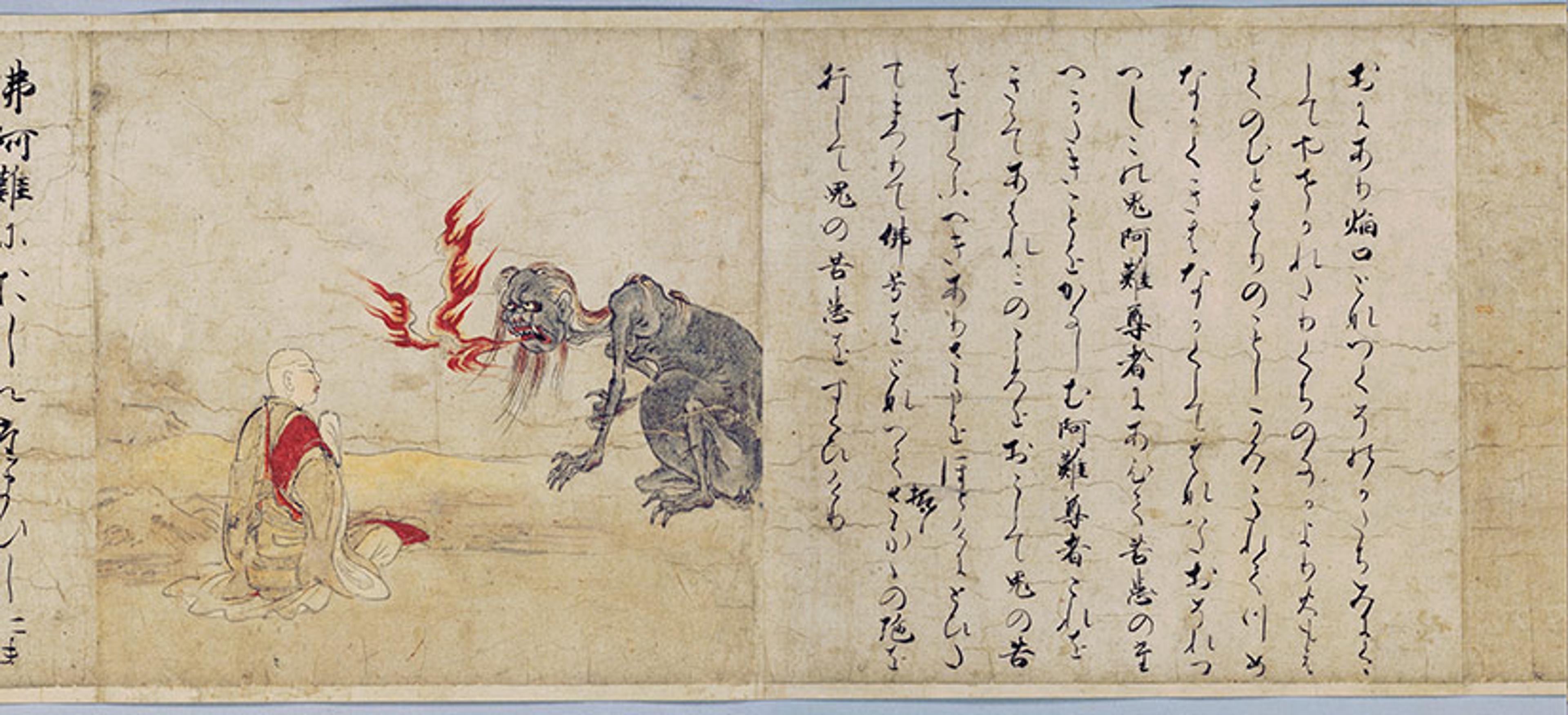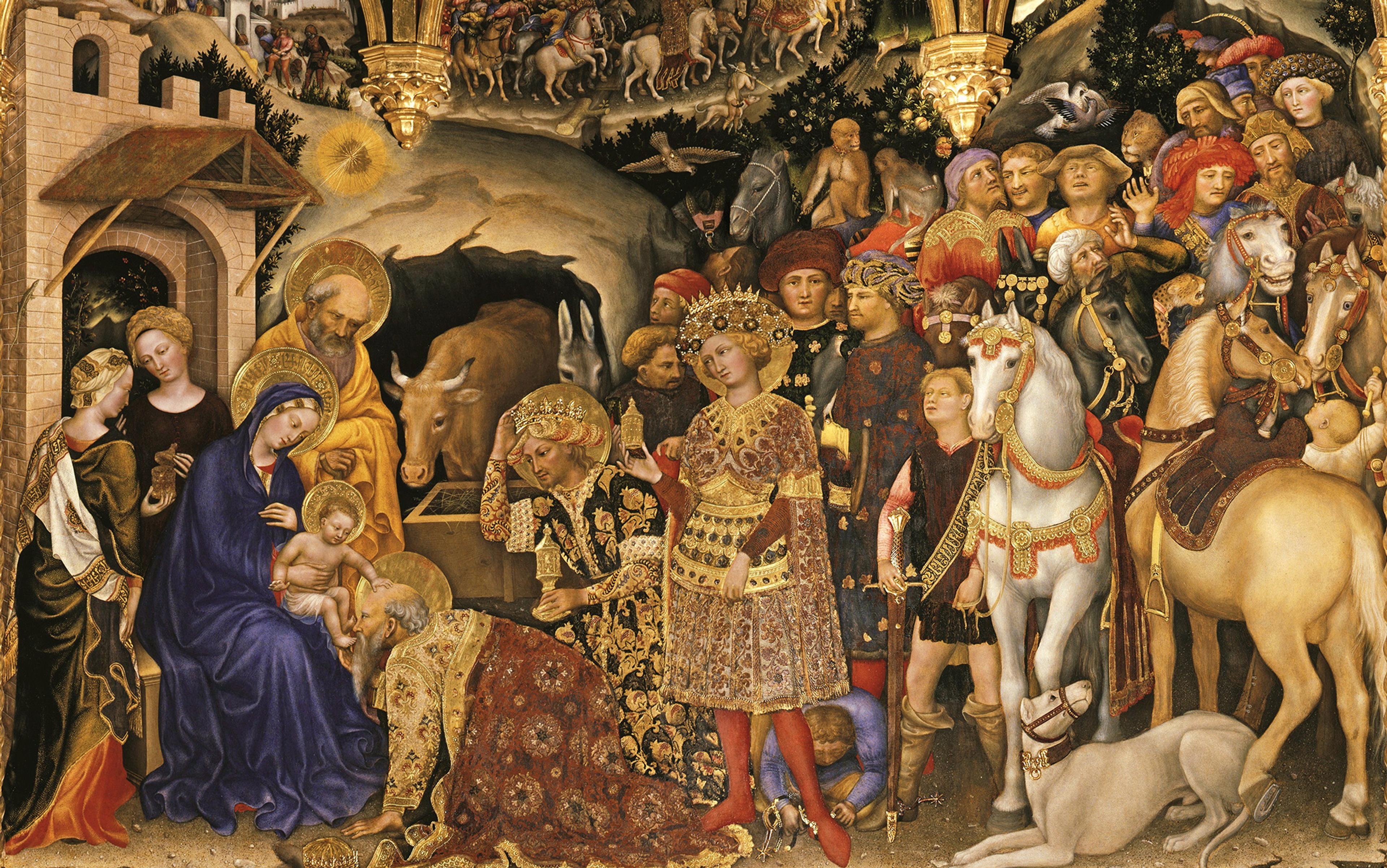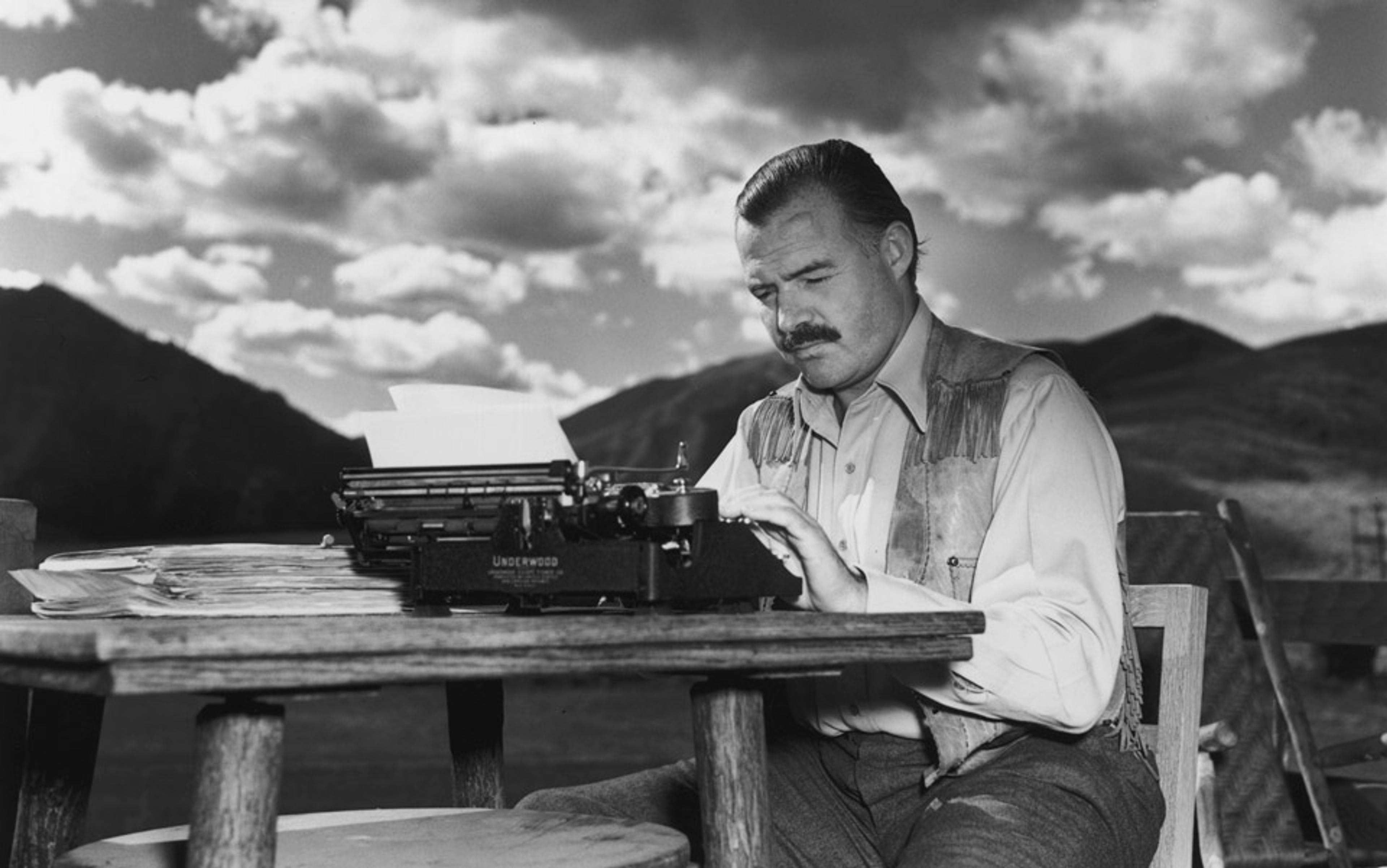The Hungarian folktale Pretty Maid Ibronka terrified and tantalised me as a child. In the story, the young Ibronka must tie herself to the devil with string in order to discover important truths. These days, as a PhD student in philosophy, I sometimes worry I’ve done the same. I still believe in philosophy’s capacity to seek truth, but I’m conscious that I’ve tethered myself to an academic heritage plagued by formidable demons.
The demons of academic philosophy come in familiar guises: exclusivity, hegemony and investment in the myth of individual genius. As the ethicist Jill Hernandez notes, philosophy has been slower to change than many of its sister disciplines in the humanities: ‘It may be a surprise to many … given that theology and, certainly, religious studies tend to be inclusive, but philosophy is mostly resistant toward including diverse voices.’ Simultaneously, philosophy has grown increasingly specialised due to the pressures of professionalisation. Academics zero in on narrower and narrower topics in order to establish unique niches and, in the process, what was once a discipline that sought answers to humanity’s most fundamental questions becomes a jargon-riddled puzzle for a narrow group of insiders.
In recent years, ‘canon-expansion’ has been a hot-button topic, as philosophers increasingly find the exclusivity of the field antithetical to its universal aspirations. As Jay Garfield remarks, it is as irrational ‘to ignore everything not written in the Eurosphere’ as it would be to ‘only read philosophy published on Tuesdays.’ And yet, academic philosophy largely has done just that. It is only in the past few decades that the mainstream has begun to engage seriously with the work of women and non-Western thinkers. Often, this endeavour involves looking beyond the confines of what, historically, has been called ‘philosophy’.
Expanding the canon generally isn’t so simple as resurfacing a ‘standard’ philosophical treatise in the style of white male contemporaries that happens to have been written by someone outside this demographic. Sometimes this does happen, as in the case of Margaret Cavendish (1623-73) whose work has attracted increased recognition in recent years. But Cavendish was the Duchess of Newcastle, a royalist whose political theory criticises social mobility as a threat to social order. She had access to instruction that was highly unusual for women outside her background, which lends her work a ‘standard’ style and structure. To find voices beyond this elite, we often have to look beyond this style and structure.
Texts formerly classified as squarely theological have been among the first to attract significant renewed interest. Female Catholic writers such as Teresa of Ávila or Sor Juana Inés de la Cruz, whose work had been largely ignored outside theological circles, are now being re-examined through a philosophical lens. Likewise, philosophy departments are gradually including more work by Buddhist philosophers such as Dignāga and Ratnakīrti, whose epistemological contributions have been of especial recent interest. Such thinkers may now sit on syllabi alongside Augustine or Aquinas who, despite their theological bent, have long been considered ‘worthy’ of philosophical engagement.
On the topic of ‘worthiness’, I am wary of using the term ‘philosophy’ as an honorific. It is crucial that our interest in expanding the canon does not involve the implication that the ‘philosophical’ confers a degree of rigour over the theological, literary, etc. To do so would be to engage in a myopic and uninteresting debate over academic borders. My motivating question is not what the label of ‘philosophy’ can confer upon these texts, but what these texts can bring to philosophy. If philosophy seeks insight into the nature of such universal topics as reality, morality, art and knowledge, it must seek input from those beyond a narrow few. Engaging with theology is a great start, but these authors still largely represent an elite literate demographic, and raise many of the same concerns regarding a hegemonic, exclusive and individualistic bent.
As Hernandez quips: ‘[W]e know white, Western men have not cornered the market on deeply human, philosophical questions.’ And furthermore, ‘we also know, prudentially, that philosophy as a discipline needs to (and must) undergo significant navel-gazing to survive … in an ever-increasingly difficult time for homogenous, exclusive academic disciplines.’ In light of our aforementioned demons, it appears that philosophy is in urgent need of an exorcism.
I propose that one avenue forward is to travel backward into childhood – to stories like Ibronka’s. Folklore is an overlooked repository of philosophical thinking from voices outside the traditional canon. As such, it provides a model for new approaches that are directly responsive to the problems facing academic philosophy today. If, like Ibronka, we find ourselves tied to the devil, one way to disentangle ourselves may be to spin a tale.
Folklore originated and developed orally. It has long flourished beyond the elite, largely male, literate classes. Anyone with a story to tell and a friend, child or grandchild to listen, can originate a folktale. At the risk of stating the obvious, the ‘folk’ are the heart of folklore. Women, in particular, have historically been folklore’s primary originators and preservers. In From the Beast to the Blonde (1995), the historian Marina Warner writes that ‘the predominant pattern reveals older women of a lower status handing on the material to younger people’.
Folklore has existed in some form in every culture and, in each, it has brought underrepresented groups to the fore. As we look to expand the canon, folklore is a rich source of thought on topics of philosophic interest with the potential to uplift a wide range of voices who have thus far been largely overlooked.
Folktales puzzle and surprise and haunt. They make us ask ‘Why?’ And they invite us to imagine new ways to respond
In his wry poem ‘The Conundrum of the Workshops’ (1890), Rudyard Kipling describes Adam’s first sketch scratched in the dirt of Eden with a stick:
… [It] was joy to his mighty heart,
Till the Devil whispered behind the leaves: ‘It’s pretty, but is it Art?’
And so we may ask: folklore may be inclusive, but is it philosophy?
To answer that question, one would need at least a loose definition of philosophy. This is daunting to provide but, if pressed, I’d turn to Aristotle, whose Metaphysics offers a hint: ‘it is owing to their wonder that men both now begin, and at first began, to philosophise.’ In my view, philosophy is a mode of wondrous engagement, a practice that can be exercised in academic papers, in theological texts, in stories, in prayer, in dinner-table conversations, in silent reflection, and in action. It is this sense of wonder that draws us to penetrate beyond face-value appearances and look at reality anew.
Given this lens, it is unsurprising that one solution to philosophy’s crisis might be found in a childhood pastime. In childhood, we literally see the world with new eyes; here, wonder is most keenly felt. We’ve all heard a child ask ‘Why?’ and realised not only that we don’t know the answer, but that we’d forgotten how miraculously puzzling the question was to begin with. Wonder and folktales are likewise linked. Wundermärchen – the original German word for fairytale – literally translates to ‘wonder tale’. Perhaps this is why children love folktales. In most cultures, folktales predate broad social distinctions between adult and children’s entertainment. But as other flashier diversions have largely overtaken the adult sphere, folktales have maintained their spell over children. They speak the child’s language. They puzzle and surprise and haunt. They make us ask ‘Why?’ And they invite us to imagine new ways to respond.
Aristotle’s wonder-based view of philosophy hasn’t been accepted by all. The late Harry Frankfurt rejected this analysis of what makes a question philosophical, countering in The Reasons of Love (2004):
It is hardly appropriate to characterise these things merely as puzzling. They are startling. They are marvels. The response they inspired must have been deeper, and more unsettling, than simply – as Aristotle puts it – a ‘wondering that the matter is so.’ It must have been resonant with feelings of mystery, of the uncanny, of awe.
But wonder, fear and awe are old friends. Like any Catholic schoolchild, I learned that ‘fear of God’ was just another name for ‘wonder and awe’. It seems that folklore and philosophy meet at this intersection, where wonder and fear converge into something both unsettling and marvellous. The folklorist Maria Tatar writes that, in the world of the folktale, ‘anything can happen, and what happens is often so startling … that it often produces a jolt.’ Folklore and philosophy are both in the business of startling us. Philosophy demands that we confront humanity’s deepest anxieties and longings. Whether we disguise them with phis and psis, it is deeply concerned with our shudders and sighs. And folklore, with its forests and phantoms, is perhaps the largest-scale historical inventory of these fears.
The folklorist Reet Hiiemäe goes as far as to argue it is ‘human fear’ that ‘induced the emergence and formation of folkloric phenomena’. Folklore is an imaginative attempt to make sense of the inexplicable. By tuning into what frightens us, we learn who we are. And if we want to find out what frightens us, the Black Forest is the first place we should look.
Philosophy and folklore both elicit this sense of wondrous fear, startling awe. They also share a dual aim, well articulated by Bruno Bettelheim in The Uses of Enchantment (1976). For him, the purpose of folklore is to help us ‘live not just moment to moment, but in true consciousness of our existence.’ Here, as in philosophy, there is the search for the truth, which is to meaningfully attend to the structures of reality we so often take for granted, to perceive the world as more than mere scenery.
Second, there is the aim of a life well lived, the desire that our intellectual enquiry serve our lived experience, that we live and breathe our philosophy as well as contemplate it. The most obvious philosophical application of folklore is to ethics. Most of us are familiar with the parting moral lesson found at the end of familiar childhood tales. Warner argues that one of the most valuable aspects of the medium is its centring of marginalised voices in moral debates. She writes that ‘alternative ways of sifting right and wrong require different guides, ones perhaps discredited or neglected.’ If indeed philosophy is in crisis in part because of a narrowly circumscribed demographic of ‘guides’, folklore is a rich place to look for new ones. Bettelheim also suggests that folktales are normatively laden at their most fundamental level:
Tolkien addressing himself to the question of ‘Is it true?’ remarks that ‘It is not one to be rashly or idly answered.’ He adds that of much more real concern to the child is the question: ‘“Was he good? Was he wicked?” That is, [the child] is more concerned to get the Right side and the Wrong side clear.’
Before a child can come to grips with reality, he must have some frame of reference to evaluate it. When he asks whether a story is true, he wants to know whether the story contributes something of importance to his understanding, and whether it has something significant to tell him in regard to his greatest concerns.
Combing through folklore, it is easy to find stories that map well on to our contemporary concerns – many even mirror the structure of core ethical thought-experiments. For instance, in the traditional Russian tale Ilya Muromets and the Dragon, the hero must choose between aiding a king in a distant land whose kingdom is plagued by dragons, and returning to serve his home nation, which is in less dire need. In this tale, themes of partiality, community and nationalism arise. Does great need override one’s partiality toward one’s own family, nation, community? Parallels can be seen in many well-known thought-experiments in contemporary ethics. Whether one is jumping off a pier to save a drowning woman, steering a trolley, or ruining their new shoes in a pond to save a child, philosophers have long been concerned with whether and how our obligations to the familiar and the strange diverge. When mutually exclusive, should one save the life of one’s friend or of a stranger?
Another potent example arises in the Haitian folktale Papa God and General Death. There is a wide ethical literature on the nature and value of death: Fred Feldman’s Confrontations with the Reaper (1992) provides a useful introduction to the many facets of the debate. Is death a great evil? Is it a form of injustice? This tale offers an argument in defence of death. Papa God claims that people love him better than Death because he gives them life, while Death only takes it away. To prove this is so, Papa God asks a local man for water. The man, upon hearing that He is God, refuses Him a drink. When questioned, the man explains that he prefers Death over God:
Because Death has no favourites. Rich, poor, young, old – they are all the same to him … Death takes from all the houses. But you, you give all the water to some people and leave me here with 10 miles to go on my donkey for just one drop.
This tale turns our assumptions on their head, vividly arguing against the common presupposition that death is a moral evil. In its universality, death is actually a form of justice in a way that life never can be.
In many cultures, folklore has even greater ethical import. For instance, the scholars Oluwole Coker and Adesina Coker argue that in Yoruba culture folklore plays a large role in ‘generating the laws governing intra and interpersonal relationships, communal cohesion, ethical regime and the justice system’. They term this relationship ‘folklaw’, explaining that folklore functions as a law-like ethical system that underlies social practices. They also emphasise that folklore is a ‘pathway for existential philosophy among the Yoruba’, as ethical quandaries are primarily explored through story. The Yoruba have long taken folklore seriously as a source of ethical reasoning.

From Gaki-Zoshi (The Hungry Ghosts Scroll); late 12th century. Courtesy the Kyoto Museum
Beyond ethics, folklore touches all the branches of philosophy. With regard to its metaphysical import, Buddhist folklore provides a striking example. When dharma – roughly, the ultimate nature of reality – ‘is internalised, it is most naturally taught in the form of folk stories: the jataka tales in classical Buddhism, the koans in Zen,’ writes the Zen teacher Robert Aitken Roshi. The philosophers Jing Huang and Jonardon Ganeri offer a fascinating philosophical analysis of a Buddhist folktale seemingly dating back to the 3rd century BCE, which they’ve translated as ‘Is This Me?’ They argue that the tale constructs a similar metaphysical dilemma to Plutarch’s ‘ship of Theseus’ thought-experiment, prompting us to question the nature of personal identity:
The story tells the tale of a traveller’s unfortunate encounter with a pair of demons, one of whom is bearing a corpse. As the first demon tears off one of the man’s arms, the second demon takes an arm from the corpse and uses it as a transplant. This sport continues until the man’s whole body has been replaced, torn limb from limb, with the body-parts of the corpse. The man is given to ask himself: ‘What has become of me?’
This tale tests our intuitions about the relationship between an entity’s parts and its whole. At what point does the mass of parts become the man? What sorts of material substitution entail an identity change?
Ancient tales have played a pivotal role in challenging previously unquestioned epistemic assumptions
The conclusion of the tale foregrounds an alternative approach to epistemology. Following the Buddhist Madhyamaka tradition of the ‘tetralemma’, the tale outlines four possible responses to the dilemma: is the replaced body the original man? 1) Yes it is the man. 2) No it is not the man. 3) It is both the man and not the man. 4) It is neither the man nor not the man. The tale progresses to reveal that each of these options leads to some absurdity. This functions as a reductio argument against the notion of personal identity altogether, suggesting that the concept was, from the start, empty or incorrectly defined. Other tales affirm the more radical notion that it is coherent to reject or accept all four responses simultaneously.
This heterodox approach to epistemology inspired the logician Graham Priest’s notion of ‘dialetheism’, which posits the coherence of ‘dialetheias’ – joint propositions that include a statement and its negation. The development of dialetheism provides an example of a case where ancient tales have already played a pivotal role in challenging previously unquestioned epistemic assumptions. What other philosophic insights might lie buried in folklore? What new questions might they ask, and how might they widen our understanding of the scope of answers available?
Then there is the question of methodology: when faced with a folktale, how would a sympathetic philosopher proceed? The tales generally aren’t going to give us arguments neatly pre-packaged in premise-conclusion form. We will need to put in the interpretive work to understand the contextual and stylistic features necessary to extract philosophic insights. There will be interpretive, literary and anthropological facts to consider. Perhaps philosophers are ill-equipped to do this work alone – and all the better! Cross-disciplinary engagement broadens our enquiry and leaves all involved enriched. How wonderful would it be if departments collaborated more often, if we saw papers co-published by folklorists and metaphysicians, if our search for truth transcended bureaucratic academic divisions and led us through the winding paths of stories, paths we shared in childhood, but have long since forgotten.
But before we sharpen our pencils to hunt for proofs, I would invite my fellow philosophers to be open to alternative approaches to engaging with philosophic ideas. Don’t get me wrong, I love premise-conclusion form as much as the next girl (and probably far more, unless the next girl is also a graduate student in metaphysics). But it would be patently irrational to assume that the whole of philosophic understanding is recorded in that form. (And we lovers of proofs famously detest irrationality.)
In folktales, we may not always find arguments, at least as typically construed. This is not a sign of philosophical impotence. The European bias of the canon tends to privilege a particular argumentative structure. However, stories are not new to philosophy: Plato, Friedrich Nietzsche and Søren Kierkegaard were all vivid storytellers. Today, even the most methodologically rigid analytic philosophy is not immune to the lure of narrative. Just look at Bettelheim’s description of the function of fairy tales, which could be mistaken for a description of the contemporary thought-experiment:
It is characteristic of fairy tales to state an existential dilemma briefly and pointedly … [in order] to come to grips with the problem in its most essential form …
Storytelling is germane to the philosophic tradition, despite a general decline in recent times. (‘Recent’ in the long history of philosophy can mean a few centuries.) But the historical precedent for narrative in philosophy isn’t its only justification. Where the structure of folklore diverges from the philosophic tradition is perhaps where its impact can be most useful. Folklore is full of magical metamorphosis. It casts its spell, and I think we ought to let it. The most powerful canon-expansion will move beyond mere addition to methodological transformation.
Folklore provides a new model of enquiry that has the power to transform the discipline in exciting ways, re-enlivening it from the inside. What could philosophy look like beyond the assumptions of contemporary academia? How can folklore shed light on alternative ways of reasoning, raise new puzzles, and expand the range of answers in view?
Ludwig Edelstein, a scholar of Plato, argued that storytelling plays an important explanatory role: through stories, we ‘counteract sorcery by sorcery’. He contends that the human search for meaning is best realised when we engage both our rational and our emotive natures. Since ‘both these parts of the human soul must be equally tended by the philosopher’, stories are a valuable tool to impart ideas with maximal impact.
This value is instrumental as we seek to broaden philosophy’s reach beyond a narrow specialised few. Folklore is a medium of expansive inclusion – it transcends class and educational boundaries. As the fiction writer Karel Čapek noted: ‘a true folk fairy tale does not originate in being taken down by the collector of folklore, but in being told by a grandmother to her grandchildren’. It is intended for wide engagement, and its familiar and entertaining structure makes complex ideas accessible to a range of audiences throughout different disciplines, and beyond academe.
Another notable feature of folklore is its emphasis on collectivity. For most, the word ‘philosophy’ conjures a lineage of geniuses: your Aristotles, your Sartres, your Kants. The discipline has valorised individuals atomistically, framing their revolutionary contributions in a vacuum. In recent years, many have cast aspersions on this narrative. The sociologist Sal Restivo declares: ‘[I]f you give me a genius, I will give you a social network.’ Increasingly, there is a trend toward recognising progress as a matter of collaboration rather than atomistic ownership.
Storytelling engages with the messy and the real in a way that the pristine structures of philosophy struggle to do
Folklore has a long tradition in this spirit. In Sitting at the Feet of the Past (1992), a collection of essays on the North American folktale, Steve Sanfield writes: ‘Nobody owns these stories … They change each time they’re told.’ Tales are inherently communal, having no single author. Listeners alter the stories, misremember them, embellish them, and change their meaning with each retelling. In this manner, it is a mode of thinking collectively and through time, a collaborative enquiry that persists through centuries.
The generational model of folklore also contrasts with academic philosophy’s long-lamented blindness to its own historicity, to context and to contingency. As the literary scholar Karl Kroeber observed in Retelling/Rereading: The Fate of Storytelling in Modern Times (1992):
[A]ll significant narratives are retold and are meant to be retold – even though every retelling is a making anew. Story can thus preserve ideas, beliefs, and convictions without permitting them to harden into abstract dogma. Narrative allows us to test our ethical principles in our imaginations where we can engage them in the uncertainties and confusion of contingent circumstance.
Folklore is openly historical, and openly in flux. Tales evolve with the contributions of successive tellers, and yet, in what persists, we are able to witness thought processes that approach timeless resonance. This method offers advantages over the European philosophical model, which can obscure the wider history of ideas in its insistence on abstracted and individual pursuit of the universal. Storytelling is unafraid to engage with the contextual, the messy and the specificity of the real in a way that the pristine structures of philosophy struggle to do. As such, it provides a more thoroughly examined path to what might be called the universal. Folklore is both a reflection of the Now from which it is being told, and a record of what persists throughout aeons of successive nows. To borrow Kroeber’s metaphor, folklore preserves ideas softly. It’s putting flowers in a vase rather than drying them – watery narrative is always moving, always in flux, so the ideas stay green and do not become brittle.
The ending of Pretty Maid Ibronka has always moved me. She stands at the village graveyard, a young girl facing down the devil in the guise of a sophisticated man. One expects her to scream, to run or to fight. Instead, she tells him a story, one that contains the truth. She begins at the start of the tale itself, hijacking the role of narrator, tying the story into a loop. It is only when she does so that the devil is vanquished, and his victim’s lives restored.






